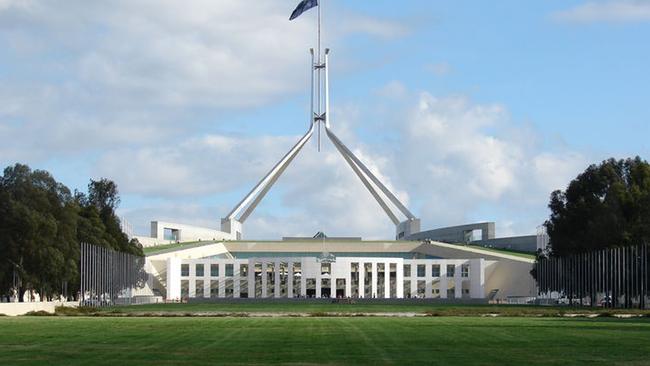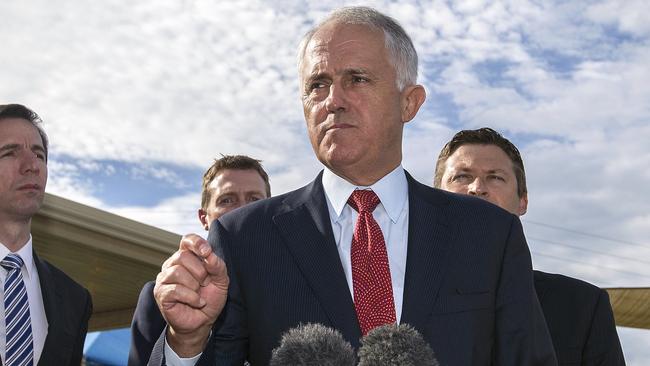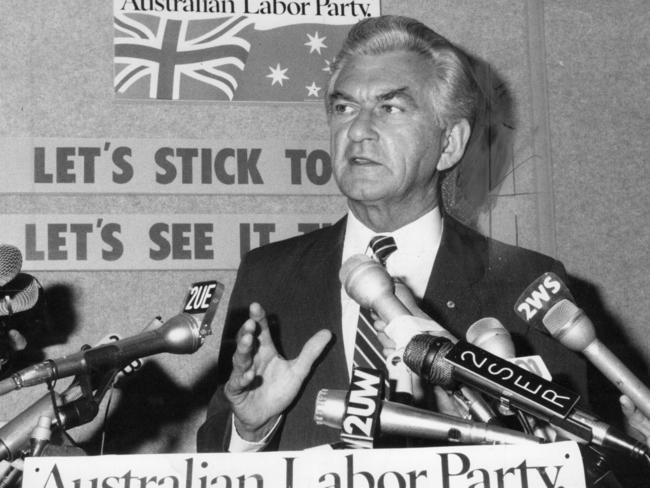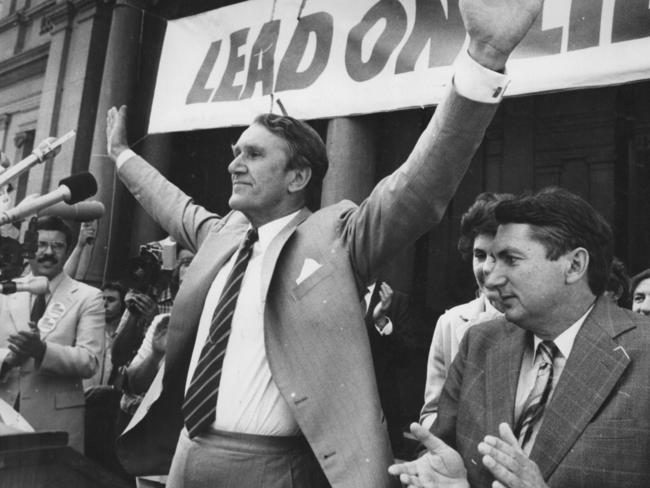Everything you wanted to know about double dissolution elections but were too afraid to ask
CANBERRA is abuzz with speculation the PM could call a double dissolution election within days. Political Reporter Peter Jean explains what this means for voters and the nation.

News
Don't miss out on the headlines from News. Followed categories will be added to My News.
- Prime Minister fuels speculation of early Budget, election
- Paul Starick: PM’s Adelaide dress rehearsal for election campaign
- Why Pyne feared for his future under Abbott
POLITICIANS from all sides of parliament are scrambling for copies of the constitution and bracing themselves for a long campaign as Prime Minister Malcolm Turnbull considers pulling the “triggers” needed to dissolve the 45th federal Parliament order a rare “double dissolution’’ election of federal Parliament.
An early “Double-D” election would allow Mr Turnbull to seek a mandate from voters after he toppled Tony Abbott from the prime ministership last September.
It would also bring forward the political execution of most “micro-party” senators.
Australia’s last double dissolution was held in 1987, so it is no wonder that many voters are struggling to understand exactly what is going on.
What is a double dissolution?
The Australian Parliament includes the 150-member House of Representatives and the 76-member Senate.
Members of the House and senators representing the ACT and Northern Territory serve terms of up to three years. Senators representing states are usually elected to serve six-year terms.

Most general elections are for the House and half the Senate.
If a “deadlock’’ occurs where the House of Representatives and the Senate are unable to agree on a proposed law, or bill, the Prime Minister can advise the Governor General to call a double-D election, where all Senate and House positions are up for grabs.
What could be a trigger for a double dissolution?
In order for a “trigger’’ to be created, the Senate must on two occasions reject or fail to pass a proposed law which has been passed by the House of Representatives.
There are currently two potential triggers: The Clean Energy Finance Corporation abolition bill and a bill and a “registered organisations” bill which would increase regulation of unions.
A third bill, to re-establish the Australian Building Construction Commission, could soon also qualify as a trigger.

How is a double dissolution election different to any other election?
The main difference is that at a Double-D, each state elects 12 senators, instead of the usual six.
What happens if the government is re-elected at a double dissolution poll but the Senate still refused to pass the trigger bills?
A joint sitting of both houses is held. At the joint sitting, a simple majority of the members and senators is required to pass the disputed bill.
During what period does the federal election have to be held?
Under the constitution, the House of Representatives only has a maximum life of three years after its first post-election meeting.
The last possible date the next election could be held is Saturday January 14, 2017.
What are the most likely dates for an election?
Australian elections are always held on Saturdays. Prime Minister Malcolm Turnbull has previously indicated an election is most likely to be held in August, September or October.
The government is now leaning strongly towards a double dissolution election, which would be held on July 2, 9 or 16.

A double dissolution would have to be called by May 11.
How does the handing down of the budget affect a possible election date?
Although the budget sitting has been scheduled for May 10, Parliament could be recalled a week so that budget night doesn’t clash with Mr Turnbull visiting Governor-General Sir Peter Cosgrove to request a double dissolution.
An early budget would give Parliament time to pass routine “supply bills”, ensuring the government had enough money to keep operating until after an election.
What reasons would prompt the government to go with an early election?
An early Double-D election would be held under new voting laws, guaranteeing the defeat of most micro-party senators who have blocked parts of the government’s agenda.
It would allow Mr Turnbull to seek a mandate for the tax reforms the government will soon announce and silence some of his critics within the Liberal Party.
What sparked the speculation around an early election?
The Government has previously said it would be willing to go to an early election on the issue of cleaning up unions.
Ministers have privately said it is highly likely a double dissolution will be held in July. By refusing to rule out shifting the date of the budget, Mr Turnbull has failed to dampen speculation of an early election.
THE HISTORY OF DOUBLE- D ELECTIONS
— Australia has only had six double-D polls since federation because most governments have had the numbers needed to get bills through the Senate.
— Gough Whitlam and Malcolm Fraser both knew the joy of winning and agony of losing double dissolution elections.
— The Whitlam Labor Government won a double-D election in 1974 and then held the first ever joint session of Parliament at which disputed bills were passed.
— In another first, Whitlam was sacked by Governor-General Sir John Kerr in 1975 after the Senate blocked supply bills. Liberal caretaker Prime Minister Fraser won the subsequent double- D.
— Fraser called another double-D in 1983 at which he was defeated by Labor’s Bob Hawke.
— The Hawke Government used controversial plans for a national identity card to trigger its own double-D in 1987. Hawke won the election but abandoned plans for the “Australia card”.
- Liberal Prime Minister Joseph Cook lost Australia’s first double-D election in 1914.
— Sir Robert Menzies’ Coalition Government used the 1951 double-D poll to capture control of both the House and the Senate.
— Kevin Rudd decided it was too risky to call a double-D on climate change policy but a short time later was knifed by his own party.


